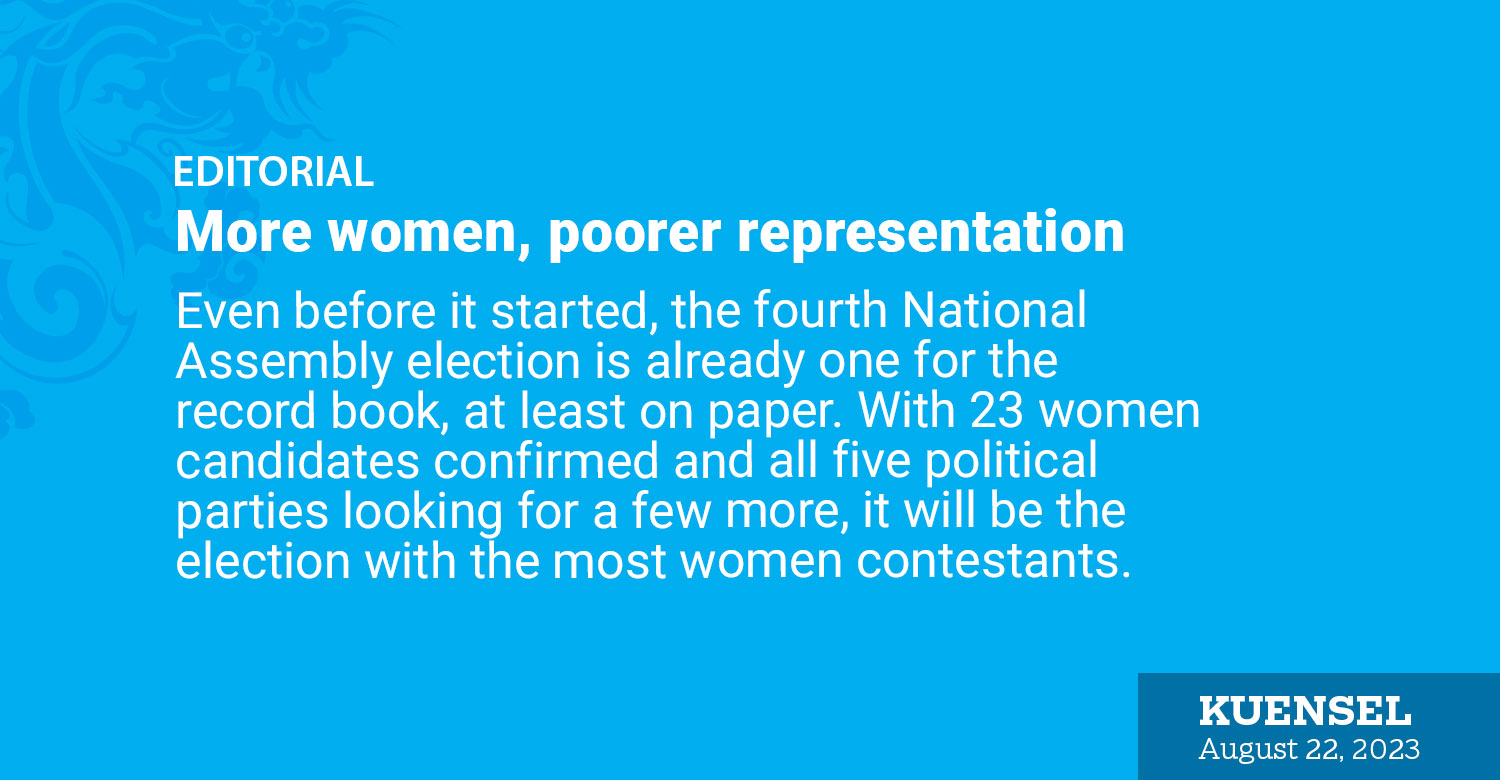Even before it started, the fourth National Assembly election is already one for the record book, at least on paper. With 23 women candidates confirmed and all five political parties looking for a few more, it will be the election with the most women contestants.
However, there is no cause for celebration. Given that there are five political parties and 235 seats, women’s participation is still lower than in previous elections. In the 2018 elections, women’s representation was 10.1 percent. As it stands today, women candidates represent 9.7 percent of 235 candidates from 47 constituencies. With all five parties almost confirming their 47 candidates, it will be a tall order to see the percentage or representation increase.
It is worse when compared to past elections. The first National Assembly election, with only two political parties, had 10 women candidates. The 2013 election was an exception. It saw the least representation. Out of the 141 seats, there were only 11 or 7.8 percent.
This brings us to the same old question of why women’s representation is poor at the political leadership level. While our electoral laws do not differentiate gender, getting women candidates, as the parties have found, is still an uphill task. Some parties planned to give tickets to at least 10 women out of 47 seats.
Looking at the numbers, encouraging women to participate has not been successful. A study by the Election Commission of Bhutan (ECB) on voter’s choice and women’s participation, 2014, found that among many reasons, there is a perception that men are better leaders while gender stereotyping restricts women’s participation. Respondents to the ECB survey also found out that both men and women felt that there should be more women represented in elective offices.
After three parliamentary and local government elections, this has not changed. The notion that women are less capable and inferior in terms of decision-making, as stated in the study, must change. We have women in governance occupying the highest positions, shouldering responsibilities, making crucial decisions, and demonstrating capability. It is unfortunate that this has not encouraged more women to take part in elections.
Ironically, those who elect leaders are mostly women. At every election, there are more women to elect their leaders than men. In the recent 2023 National Council election, out of the 485,811 registered eligible voters, 249,072 were female – 51.26 percent or 12,333 more female voters than male. A total of 265,441 votes were cast of which 130,636 were from males and 134,805 from females. In other words, there were 4,169 more females who voted. Trends from past elections also show that more women have registered to vote and cast their ballots compared with male voters.
While it is too late to intervene through policies to ensure more women’s participation (some women are against it), it is time for the Bhutanese electorate to rethink women’s representation. It could have been different and attracted attention if there were more women contesting elections at all levels.
The numbers are there to see with the political parties confirming their list of candidates. The poor women’s representation was not an issue or made headlines. It is like someone said the recently concluded Women’s football World Cup. The tournament was over without a single channel televising it or a single man complaining of it not being available to the Bhutanese audience. If it was the men’s World Cup, cable operators would have felt the wrath of football fans.


